Operations SEO - Mass Update Product SEO Meta Fields by Import
Navigate to "PIM"
By default, Kodaris generates meta fields for your products based on your store SEO and your PIM data. You can also mass update the meta fields on products. To mass update the SEO Meta Fields on products by importing, navigate to "PIM" in the operations portal. You can also update this information on the product details page, or on the data grid - which acts like an embedded spreadsheet. Importing can be helpful if you would like to quickly update a lot of products.

Click "Products"
Next, click "Products". In order to access and edit products, you will need to be assigned the role of "administrator" or "superuser". Or have the roles of: "productView" and "productEdit" along with "importEdit and "importView". These last two roles are needed for importing.
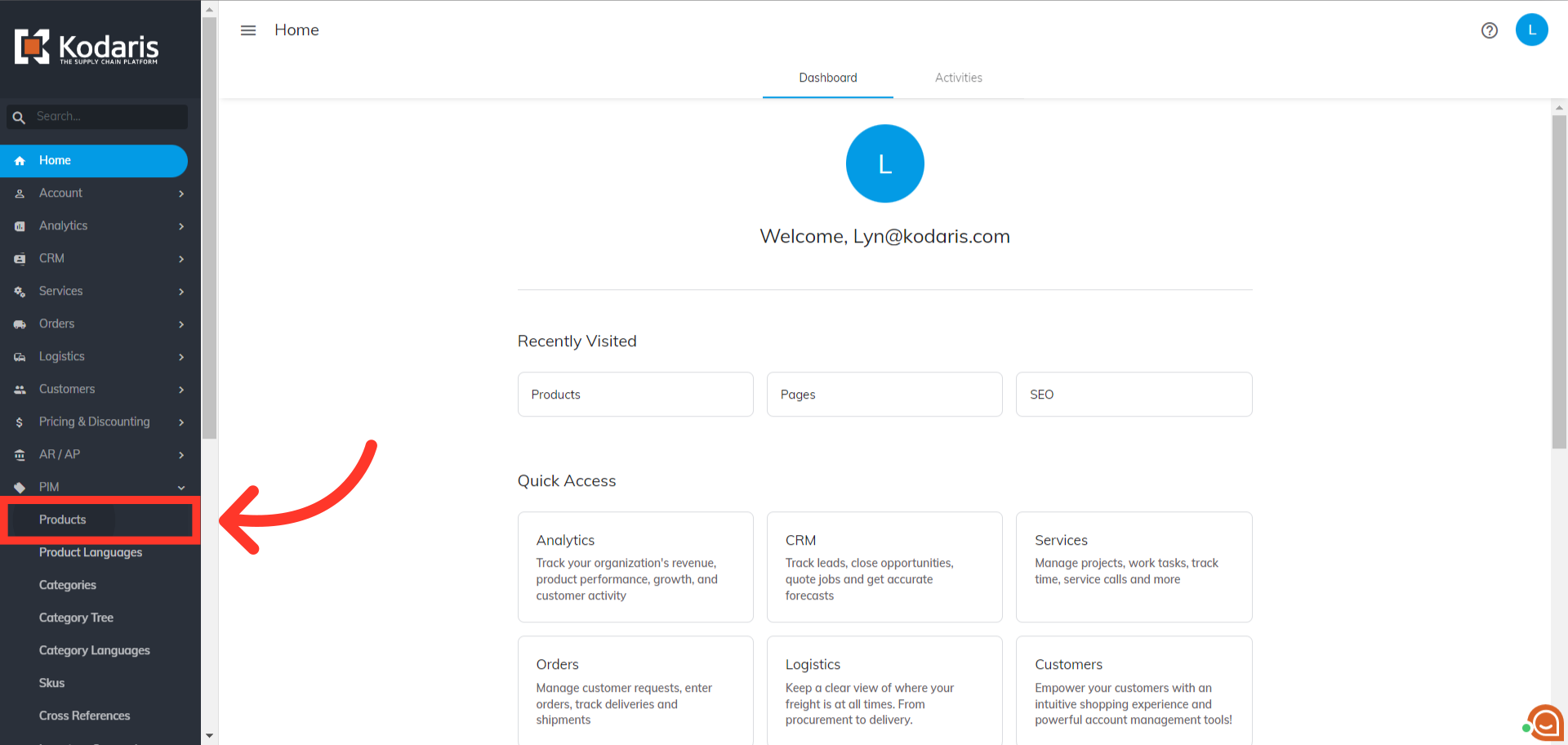
Select "Data"
Select the "Data" tab.

Click "Show/Hide Columns" icon
Click on the "Show/Hide" icon to choose the columns you would like to add to your grid.

Select the needed columns
In order to update the product SEO Meta Fields by import, you need to add the "SEO Meta Description" and "SEO Title" columns to your screen. You can also include other columns that you would like to export and update by importing. In this instance, we are also going to choose the "Code" and "Name" columns. If you would like to remove any columns from this screen before exporting, unselect any columns to remove. If you will be accessing this view often, it may be helpful to save this view with a sticky filter.
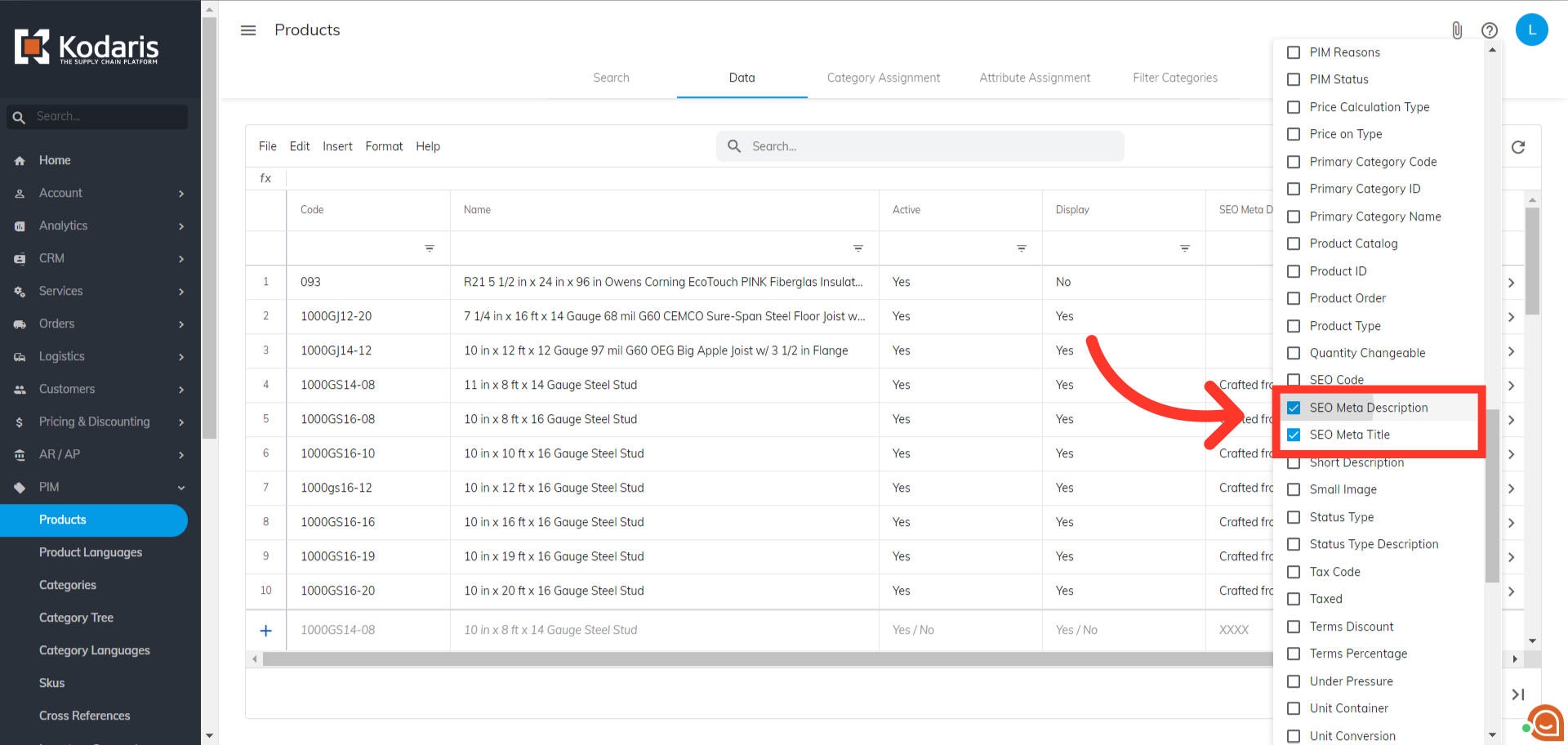
Type in the product keyword
If you would like, you can choose to only export certain products by filtering only on the products that you would like to mass update by typing in a keyword in the "Search..." field. Then, hit "Enter".

Click "File"
Now, click "File".

Click "Export"
Select the "Export" option. This export will have the needed header row and data that will be used for importing back into the system when using the "Data" screen.
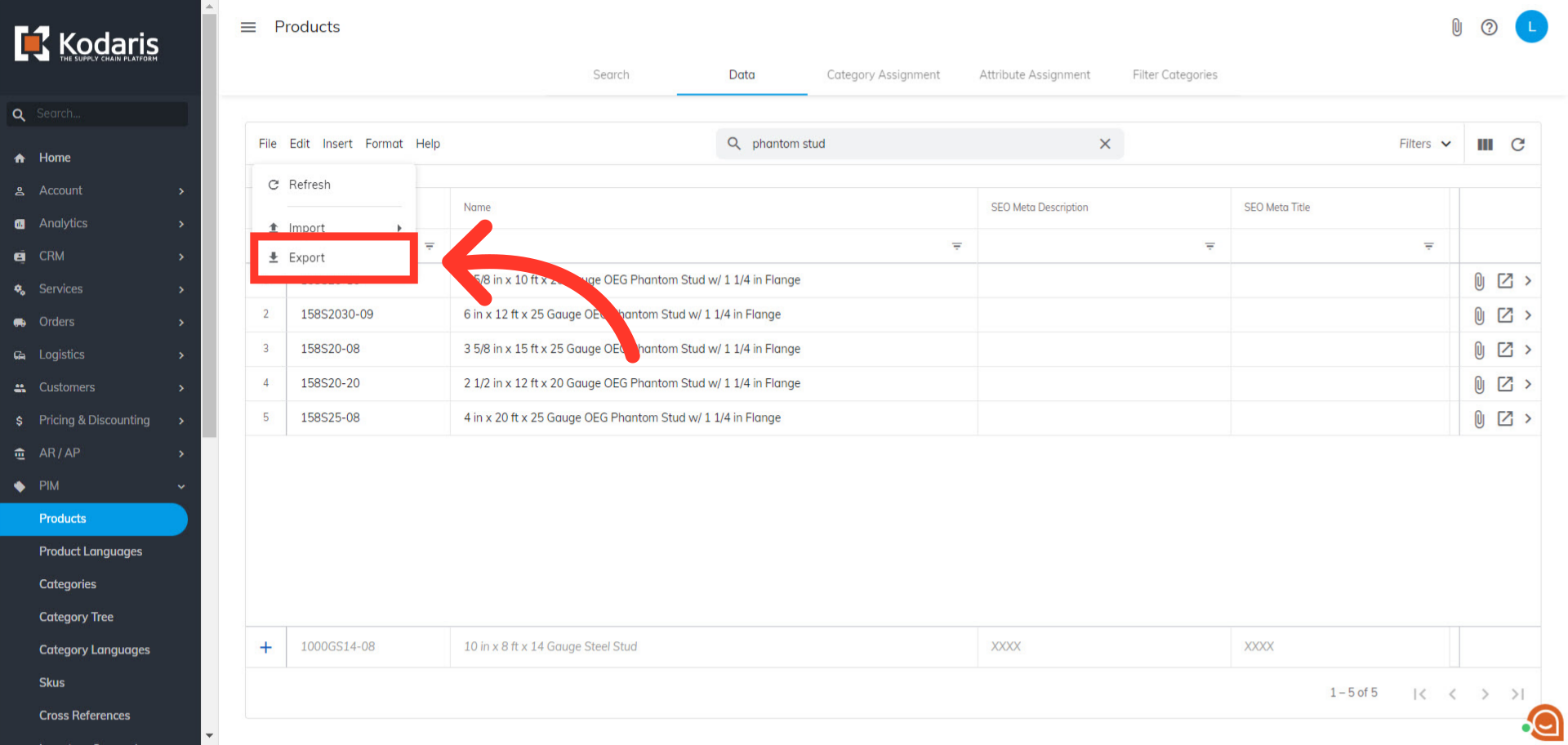
Name export
You can choose to name your export by clicking into the field and typing to update the name.
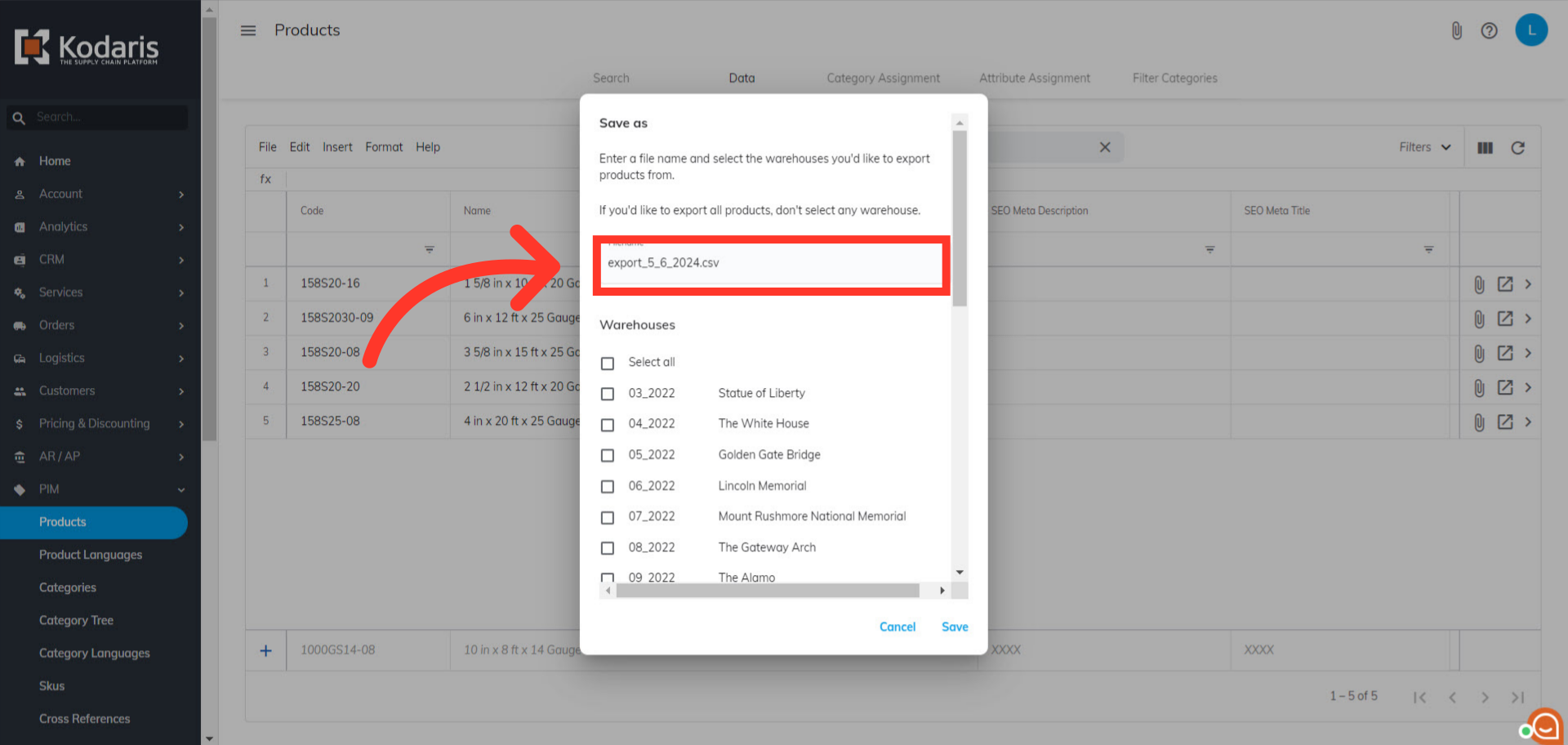
Click "Save"
Click "Save" to save the file to your computer. If you are exporting a large amount of data, it may take a small amount of time to complete the export. The file will download and save to your computer.

Header Row
You can see in this sample export that we have the header row that is needed to import data, and also the exported data from the data tab.

"code" = product code
The "code" column contains the product code. When importing product data, the code is required as it is the identifying factor for matching information.
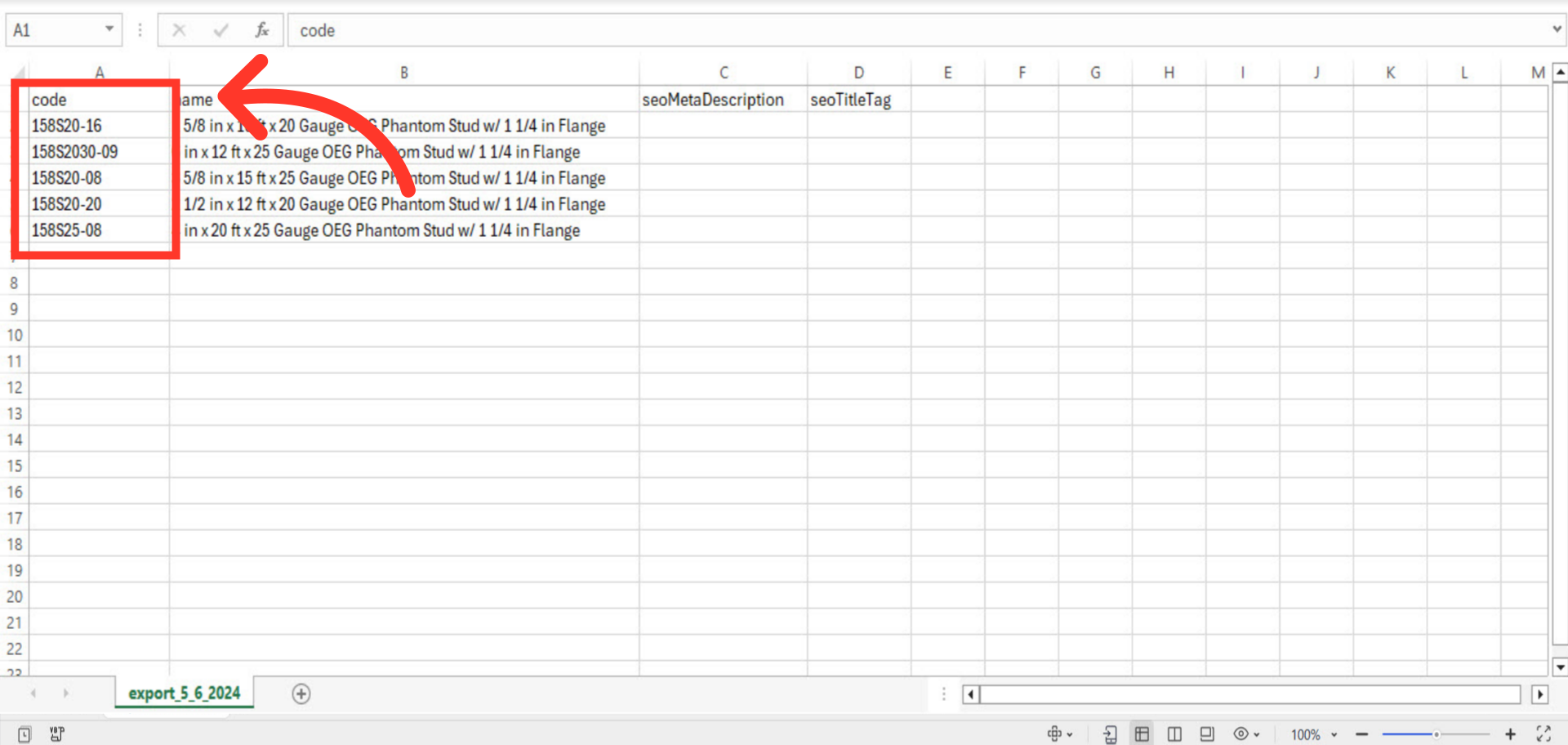
"name" = product name
The "name" column contains the name of the product - while not required for importing, it can be a helpful reference when updating product data. You can also make any needed updates to the names, and update with this import if you would like. If you do not wish to update the "name" data, then just remove the column before importing - or you can add an extra character to the name header, and the column will not update with the import.

"seoMetaDescription" = meta description
Enter the values you would like to use in "seoMetaDescription" column. If no meta description is set, Kodaris uses your global store meta description by default.
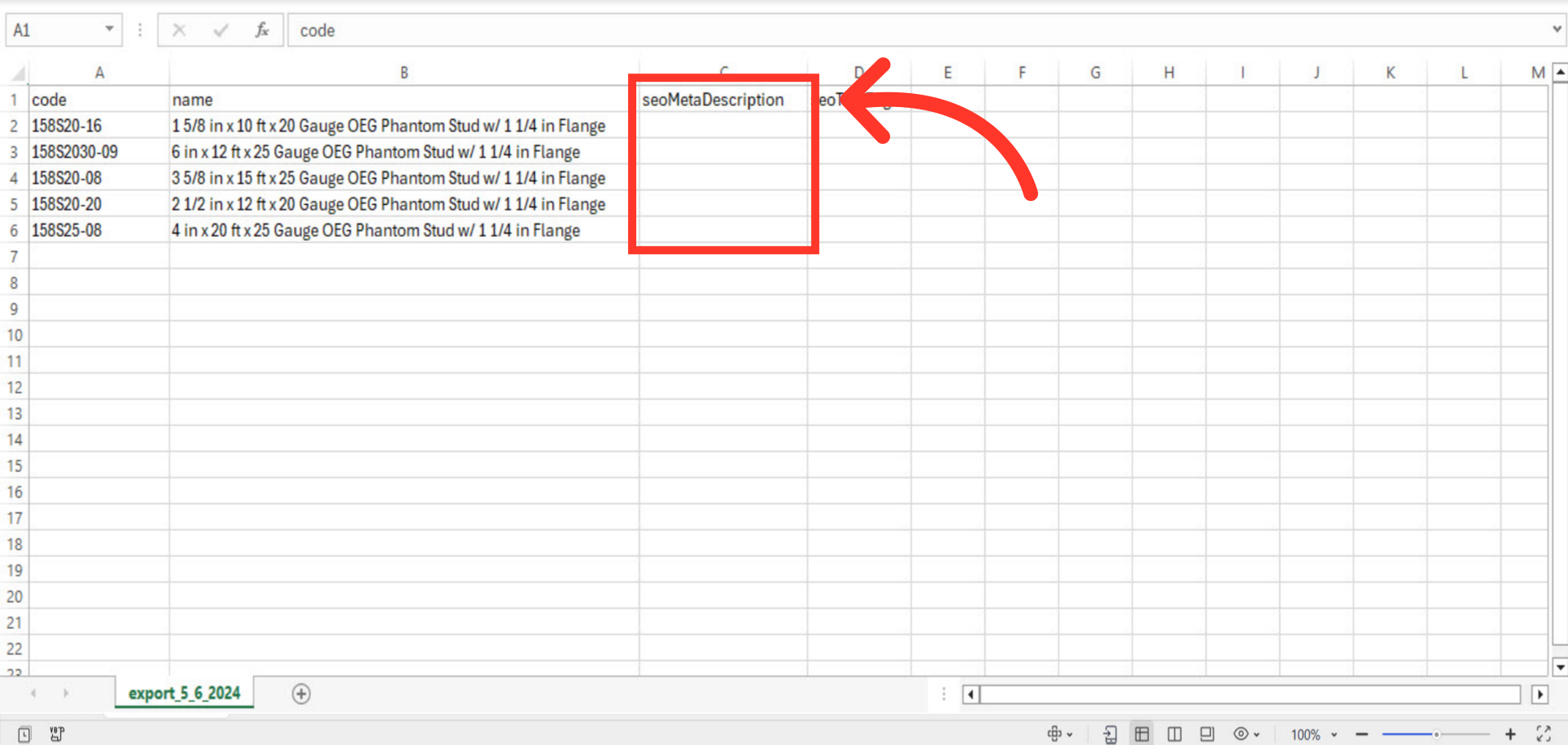
"seoTitleTag" = meta title
Enter the values you would like to use for your "Meta Title" in the "seoTitleTag" column. If no meta title is set, the product name will be used by default.
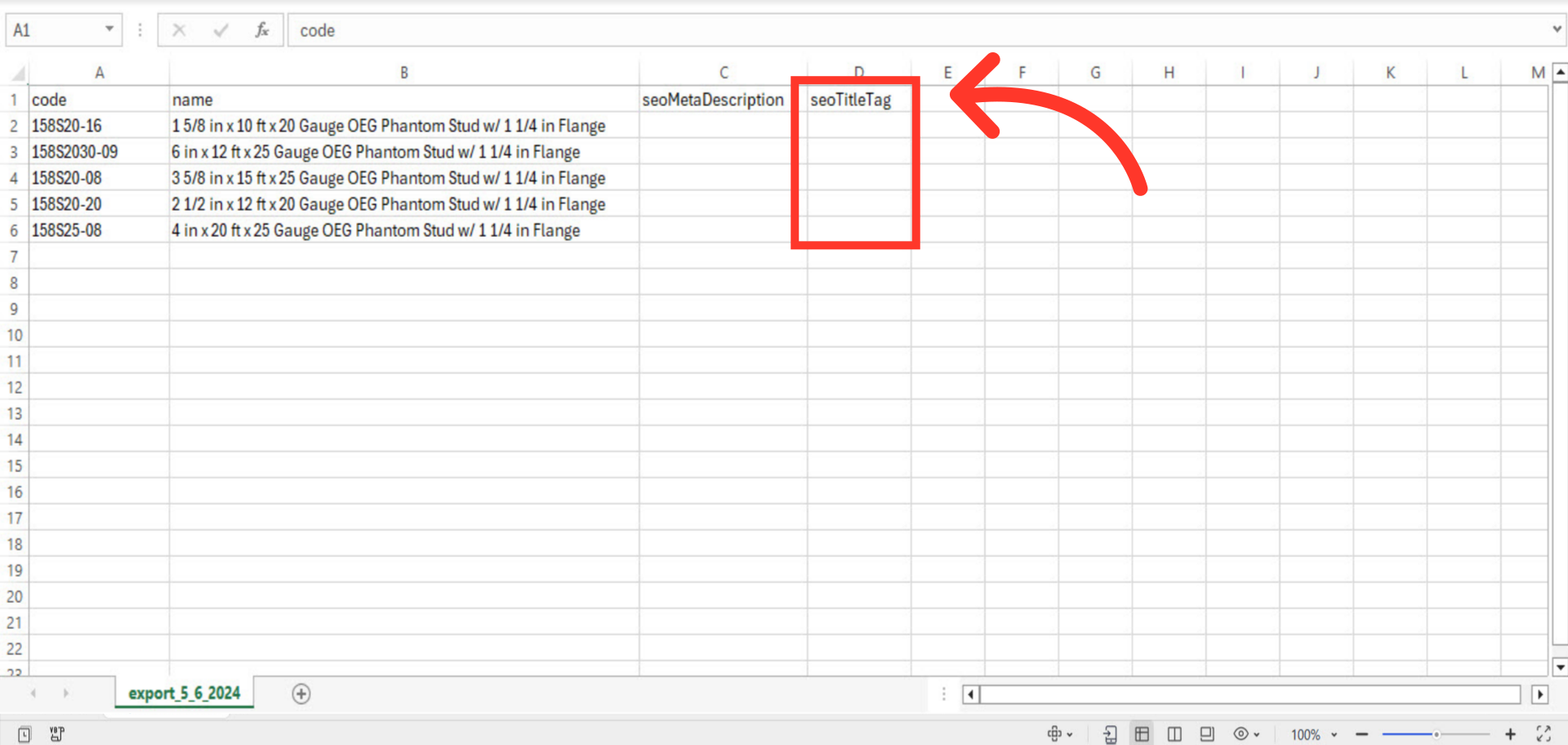
Example Spreadsheet
Once you have entered the data that you would like to update, save your spreadsheet as .CSV file which is spreadsheet compatible and your file is ready to import. Be sure the spreadsheet you are using only contains the data that you would like to update by import. If you remove data from a cell, the data imported into the system will be blank for that field on that product.

Click "File"
To import the data, go to the Products Data tab and click "File".

Click "Import"
Click "Import".

Click "Default Product Mapping Update Only"
Choose your preferred import option. "Default Product Mapping" will create any new product codes included in the spreadsheet and also update existing and new product codes with the data in your spreadsheet. "Default Product Mapping Update Only" will only update existing product codes with the data in your import. "Default Product Mapping Create Only" will only create new product codes and update the new product codes with the data in your spreadsheet. Since we only want to update product data at this time, we want to select the "Default Product Mapping Update Only" option.

Choose the file and click "Open"
Choose your updated .csv file and click "Open" to import. Please be sure that you select the correct file, as there are no rollbacks for imports.
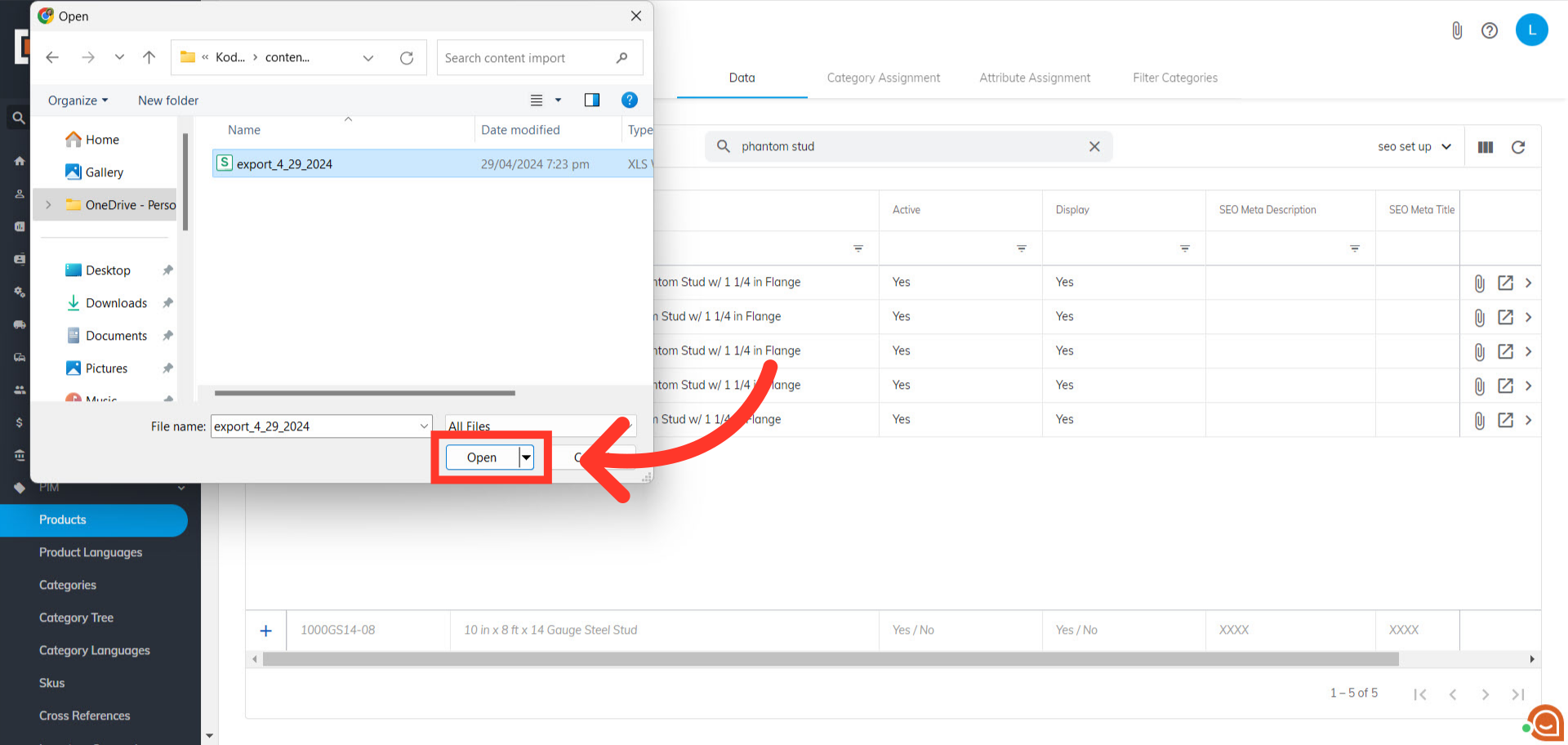
Uploading Spreadsheet
An import message will appear letting you know that the import file is in process and to check back in a few minutes for the imported data. If you are importing large amounts of data, it may take a short amount of time to complete. The import will continue to run in the background.
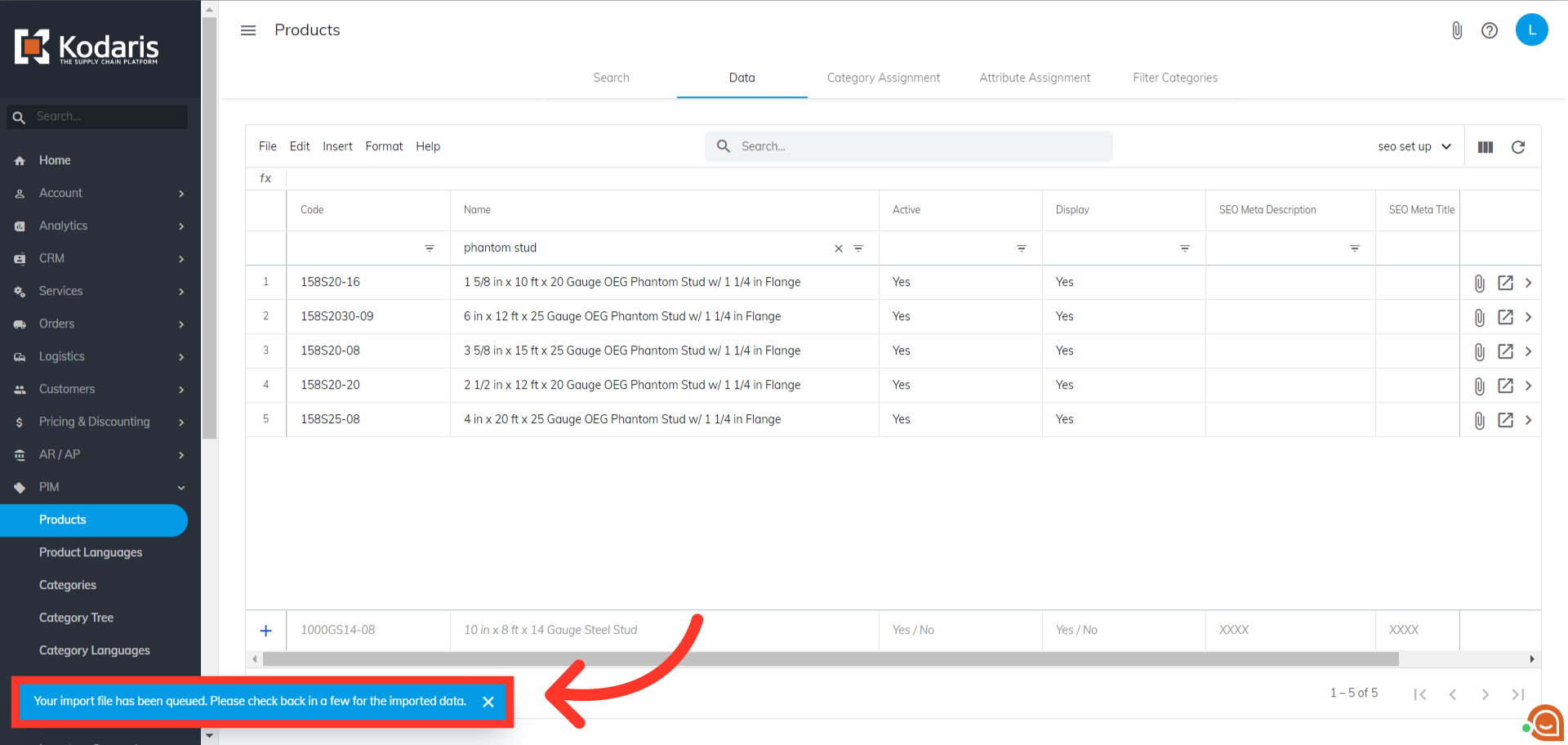
Import report
Once the import is complete, you will receive an email with the report of your import. You could also check in the operations portal that values have been updated.
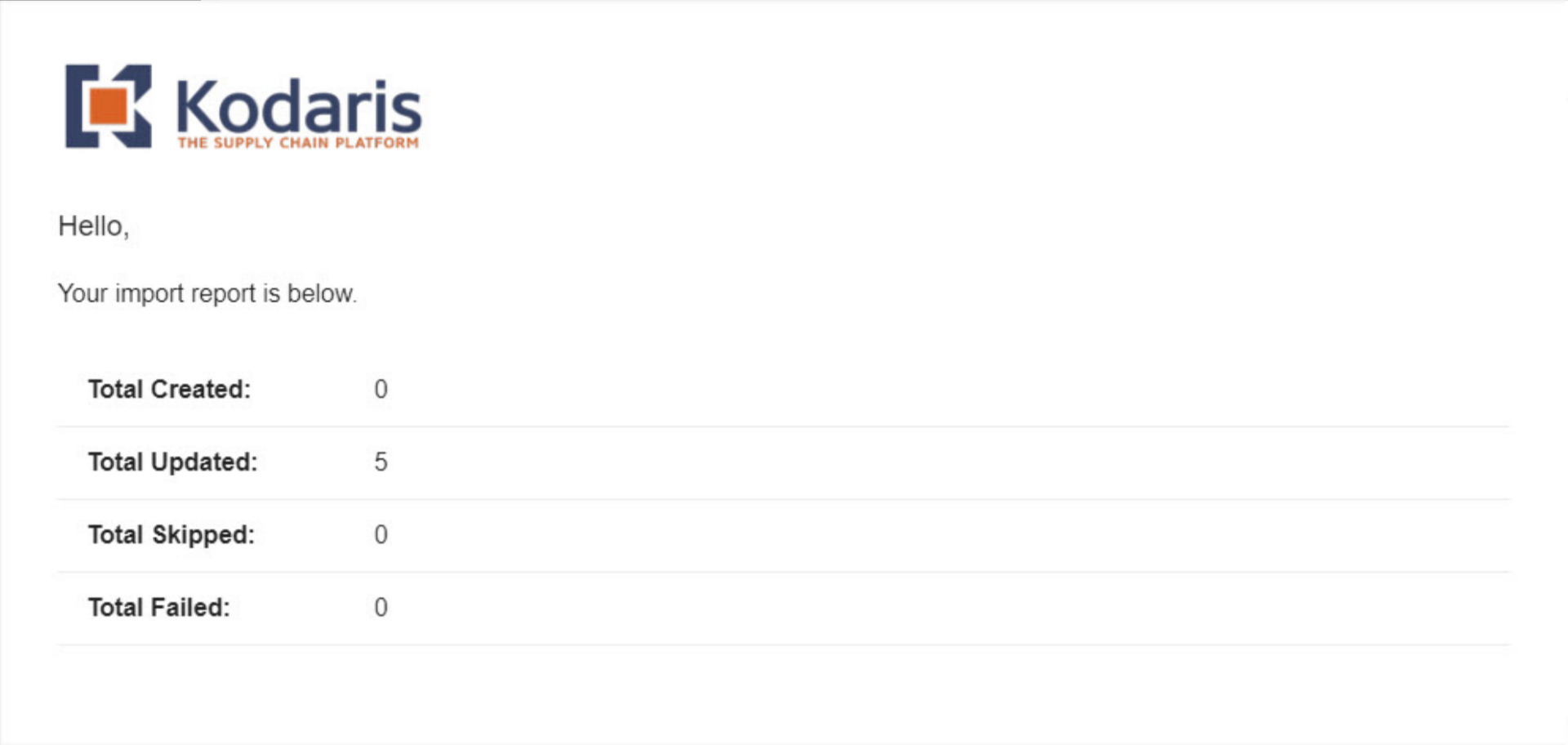
Click "Preview on Website"
To verify your product meta fields are properly set, navigate to the product page by clicking on the "Preview on Website" icon.

Click "View Page Source"
Right-click on the page and select "View Page Source". Alternatively, you can press "Ctrl + U" on your keyboard.

Locate the title and meta description tags
Locate the title and meta description tags, and they should be set to the values you entered for that imported product. Again, if no meta description is set, your global store meta description will be used by default. If no meta title is set, the product name will be used by default.

